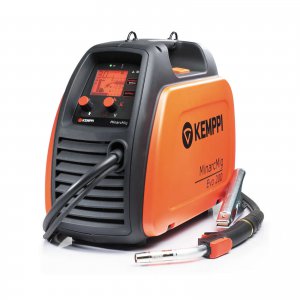- Joined
- May 27, 2016
- Messages
- 3,469
I know I am late to the party here. I tried searching and reading - until I dozed out!
The sheer number of brands, types features, jargon and prices. Reviews that are good, reviews that are biased, reviews that are unfair/incompetent/irrelevant, is only part of what we face.
No - I do not want to see another YT video of the "unboxing" of some dude's latest sponsored toy! I am thinking the only way through might have to resort to Baysian weighted attributes decision tree analysis, but before I go slowly crazy, I think there are some yes/no choices that can match to one's needs and budget. There are features that have abbreviations that need translation before even discussing whether one needs it or not. I start from nothing, other than that I remember @DavidR8 bought a Primeweld and a Esab mask.
1. Stick, MIG, TIG? Can any welder do more than one?
2. Gas, or gasless? What's the deal there?
3. How many amps for HM-style hobby use, if generally about 1/4" or maybe 5/16" angle, or common box sections up to about 50mm square is what we expect?
4. Helmet - features essential. What are they?
5. Inverter or transformer? Inverter I guess. Only from what I know about electronics, I decode IGBT to mean "Insulated Gate Bipolar Transistor".
6. Which YouTube reviews are really useful?
7.HF Ignition? How does that work?
8. Torch cooling - water or air, or don't need to bother? What is needed?
9. Given I am in UK, and in current circumstances have to use online ordering, the only common point in finding respected brands is Amazon or eBay (perhaps). There are outlets in UK for traditional established brands e.g. Lincoln or similar.
10. Are there types, or indeed brands, that one should avoid?
11. Is there a (low) price point where one may reasonably suspect the quality is likely to be crap? The price range for similar-looking welders can be huge. The relationship between price, and current rating is (sort of) there, but with huge variance.
12. I even see a Hyundai claiming MIG TIG ARC MMA, apparently all in one. So is there such a thing as "one welder does all"?
13. Other than gloves and auto-darken helmet, is there a list of other kit that can be considered essential?
14. Finally, is there some hope that we can figure out something like a "HM fine and respected" list?
The sheer number of brands, types features, jargon and prices. Reviews that are good, reviews that are biased, reviews that are unfair/incompetent/irrelevant, is only part of what we face.
No - I do not want to see another YT video of the "unboxing" of some dude's latest sponsored toy! I am thinking the only way through might have to resort to Baysian weighted attributes decision tree analysis, but before I go slowly crazy, I think there are some yes/no choices that can match to one's needs and budget. There are features that have abbreviations that need translation before even discussing whether one needs it or not. I start from nothing, other than that I remember @DavidR8 bought a Primeweld and a Esab mask.
1. Stick, MIG, TIG? Can any welder do more than one?
2. Gas, or gasless? What's the deal there?
3. How many amps for HM-style hobby use, if generally about 1/4" or maybe 5/16" angle, or common box sections up to about 50mm square is what we expect?
4. Helmet - features essential. What are they?
5. Inverter or transformer? Inverter I guess. Only from what I know about electronics, I decode IGBT to mean "Insulated Gate Bipolar Transistor".
6. Which YouTube reviews are really useful?
7.HF Ignition? How does that work?
8. Torch cooling - water or air, or don't need to bother? What is needed?
9. Given I am in UK, and in current circumstances have to use online ordering, the only common point in finding respected brands is Amazon or eBay (perhaps). There are outlets in UK for traditional established brands e.g. Lincoln or similar.
10. Are there types, or indeed brands, that one should avoid?
11. Is there a (low) price point where one may reasonably suspect the quality is likely to be crap? The price range for similar-looking welders can be huge. The relationship between price, and current rating is (sort of) there, but with huge variance.
12. I even see a Hyundai claiming MIG TIG ARC MMA, apparently all in one. So is there such a thing as "one welder does all"?
13. Other than gloves and auto-darken helmet, is there a list of other kit that can be considered essential?
14. Finally, is there some hope that we can figure out something like a "HM fine and respected" list?
Last edited:





